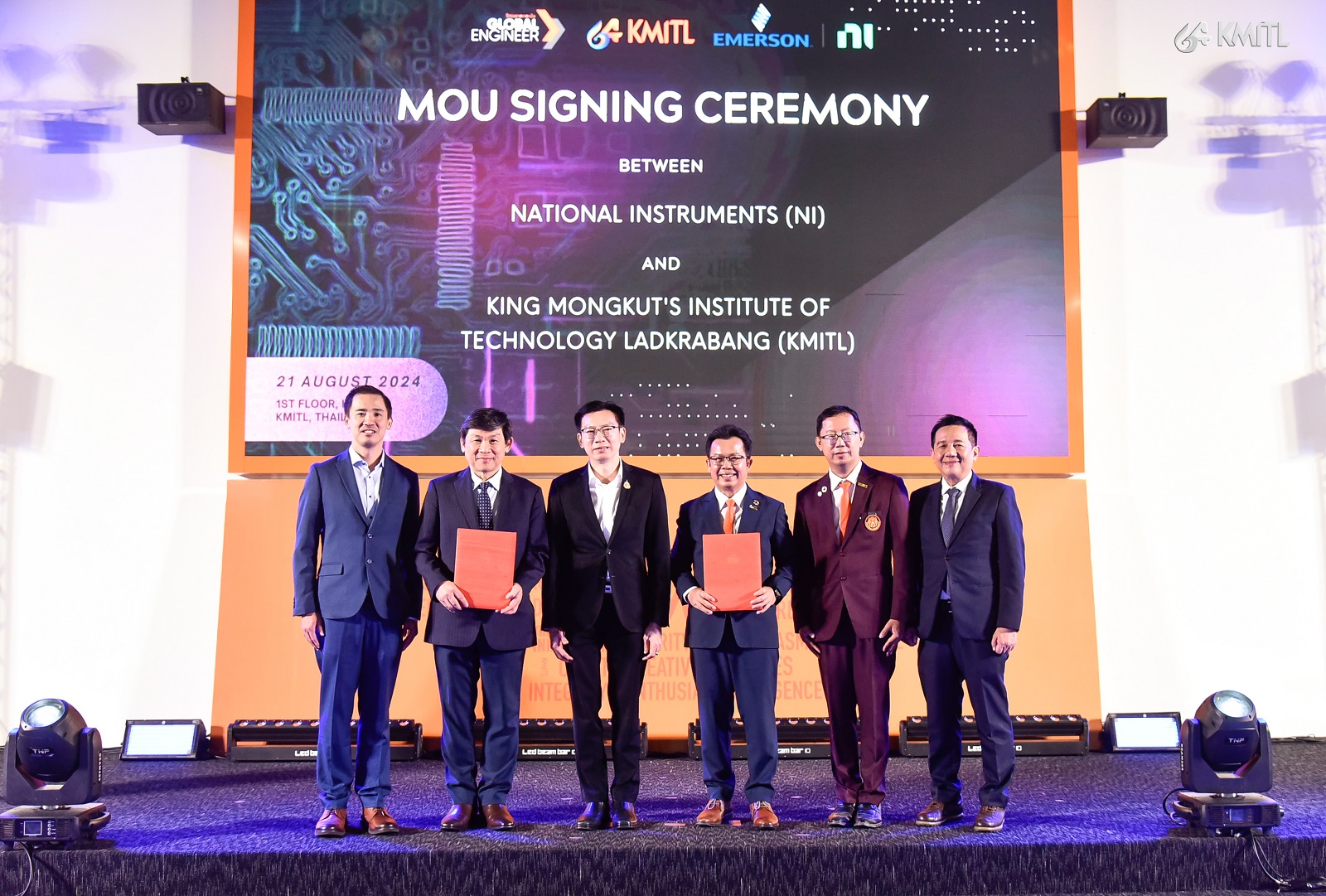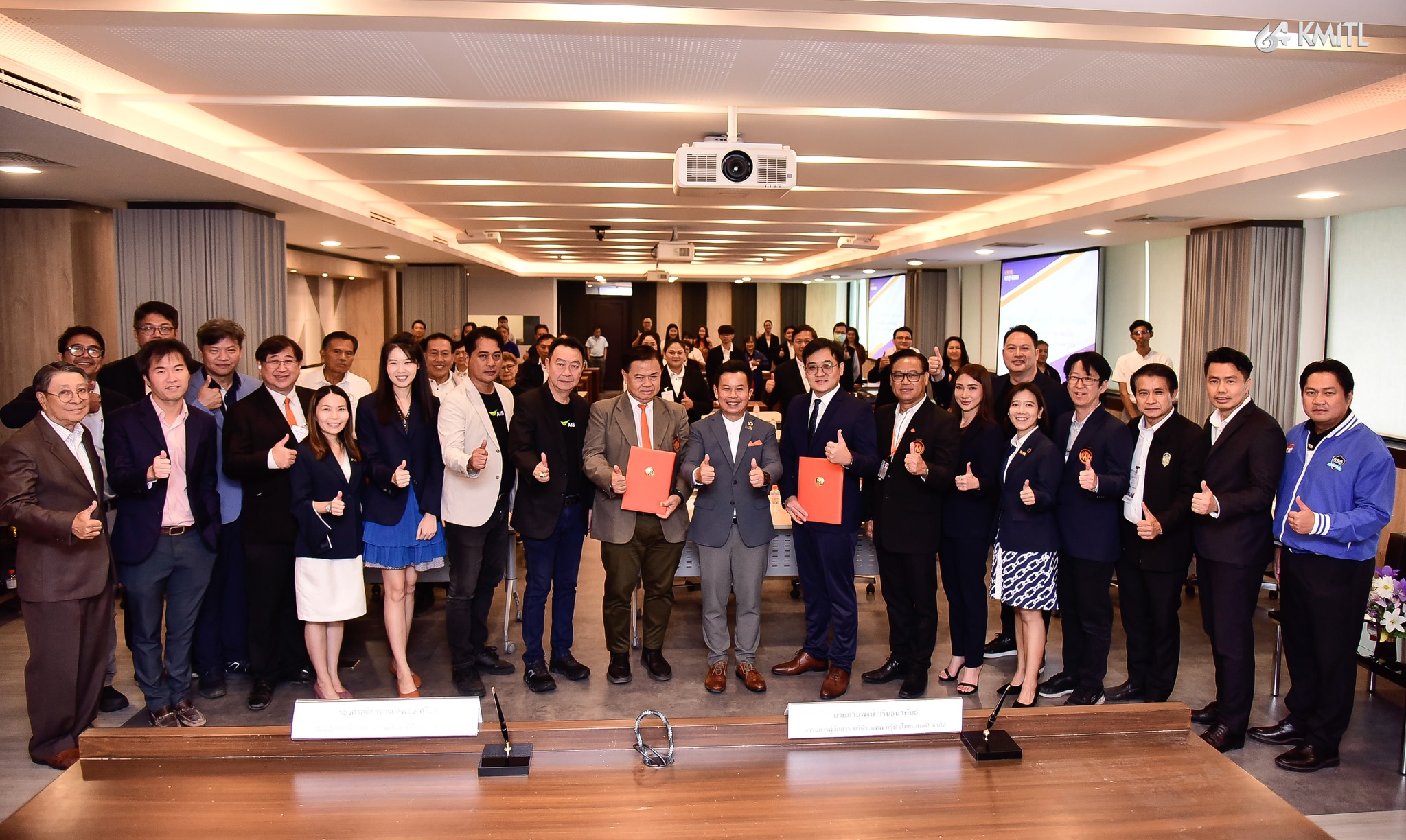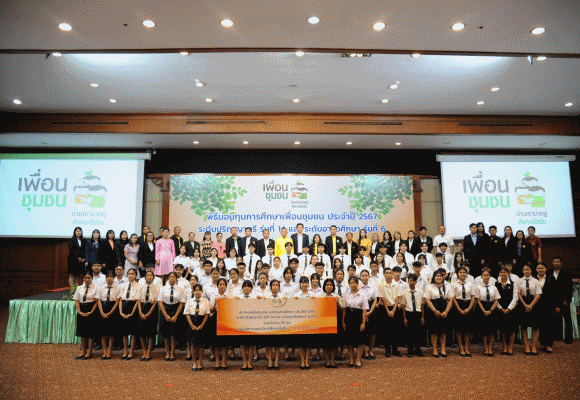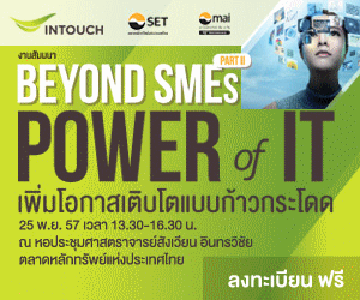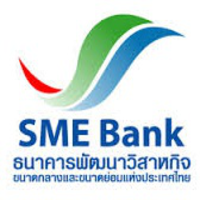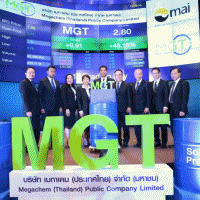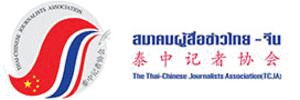- Details
- Category: การตลาด
- Published: Monday, 08 January 2018 10:47
- Hits: 4817

8 เทรนด์การตลาดแห่งเอเชียที่น่าจับตามองในปี 2561
หพันธ์การตลาดแห่งเอเชีย Asia Marketing Federation (AMF) และสมาคมการตลาดแห่งประเทศไทย จัดทำรายงานพิเศษหัวข้อ 8 เทรนด์การตลาดแห่งเอเชียที่น่าจับตามองในปี 2561 รายงานฉบับนี้เป็นการสังเคราะห์สภาพแวดล้อม การเปลี่ยนแปลงของตลาดในภูมิภาค ผนวกกับความรอบรู้อย่างมืออาชีพ และภูมิปัญญาของสมาคมการตลาดจากประเทศสมาชิกในเอเชีย โครงการนี้เป็นการริเริ่มของ มร.เฮอมาวัน การ์ตาจายา กูรูด้านการตลาดชั้นนำของเอเชีย
สหพันธ์การตลาดแห่งเอเชีย Asia Marketing Federation (AMF) ในฐานะองค์กรระดับภูมิภาค และเป็นเครือข่ายของสมาคมการตลาดในเอเชีย โดยมีภารกิจที่สำคัญเพื่อพัฒนาเครือข่ายให้เข้มแข็ง และส่งเสริมความสัมพันธ์อันดีระหว่างสมาคมการตลาดในแถบภูมิภาคเอเชีย อันจะนำมาซึ่งประโยชน์ในการพัฒนาธุรกิจ เศรษฐกิจและสังคม ประเทศสมาชิก ประกอบด้วย จีน ญี่ปุ่น เกาหลี ฮ่องกง สิงคโปร์ ไต้หวัน มองโกเลีย ฟิลิปปินส์ อินโดนีเซีย ไทย มาเลเซีย พม่า กัมพูชา เวียดนาม ศรีลังกา และบังคลาเทศ
8 เทรนด์การตลาดแห่งเอเชียที่น่าจับตามองในปี 2561
1. ดิจิตอลเทคโนโลยี และ IoT จะส่งผลกระทบอย่างสูงกับการปฏิบัติทางการตลาด
การมาถึงของเทคโนโลยีใหม่ๆ จะส่งผลกระทบกับแวดวงธุรกิจในหลายแง่มุม โดยเฉพาะธุรกิจในรูปแบบ consumer-to-consumer business ซึ่งได้รับโอกาสทางการขายที่เพิ่มขึ้นอย่างมหาศาลผ่านช่องทางการขายออนไลน์ (Internet marketplaces) และในขณะเดียวกัน ยังเปิดโอกาสให้นักการตลาดสามารถพัฒนาการสื่อสารกับผู้บริโภคให้ก้าวไปอีกขั้นด้วยการสื่อสารระดับตัวต่อตัว (one-on-one personalization/customization) ที่เข้าถึงทุกๆ คนได้พร้อมๆ กัน เป็นการปลดล็อครูปแบบการตลาดเดิมๆ
และเมื่ออุปกรณ์ใหม่ๆ อาทิ Smart TV, PCs, Smartphones, Tablets, Drones, Virtual Reality, Personal Robots, ฯลฯ แพร่หลาย ก็เป็นโอกาสให้นักการตลาดสามารถนำเทคโนโลยีปัญญาประดิษฐ์ หรือ Artificial Intelligence (AI) ล้ำหน้ามาใช้ได้ ซึ่งเทคโนโลยี AI นี้เองที่จะเป็นกุญแจสำคัญในการพัฒนาสินค้าและบริการแห่งอนาคตให้มีคุณภาพสูง แม่นยำ มีประสิทธิภาพสูงทั้งด้านเวลา และการลงทุน
ในมุมของคนทำงานก็ต้องมีการปรับตัวเช่นกัน เมื่อการตลาดก้าวสู่ยุคดิจิตอล นักการตลาดจะต้องมีความรู้ด้านเทคโนโลยีมากขึ้น และสามารถนำเทคโนโลยีใหม่ๆ มาปรับใช้ในการทำงานการตลาดได้อย่างกลมกลืน
การตลาดเอเชียกำลังจะก้าวสู่ยุคการตลาดดิจิตอลอย่างเต็มรูปแบบ ด้วยการพัฒนาของเทคโนโลยีใหม่ๆ ที่หลากหลาย ทั้ง Internet of Things (IoT) ecosystem, การเข้าสู่ยุค cloud-based era และ โซลูชั่นใหม่ๆ ทางการสื่อสาร เช่น fixed mobile convergence (FMC) ซึ่งเชื่อมต่อระบบโทรศัพท์พื้นฐานและโทรศัพท์เคลื่อนที่เข้าด้วยกันเป็นหนึ่งเดียว ทั้งหมดนี้เปิดโอกาสให้โมเดลธุรกิจใหม่ๆ เกิดขึ้นอย่างต่อเนื่อง รวมถึงบริษัทดั้งเดิมก็ก้าวสู่ยุคแห่งการเปลี่ยนแปลงเพื่อพัฒนารูปแบบธุรกิจสู่อนาคต
2. การผสานกันอย่างกลมกลืนระหว่างหัวใจผู้ประกอบการ และการตลาด
Entrepreneurship จะเป็นกุญแจสำคัญของความสำเร็จทางการตลาด โดยเฉพาะอย่างยิ่งในยุคที่สถานการณ์ทางธุรกิจไม่แน่นอนและมีการแข่งขันสูงอย่างในยุค VUCA (volatility, uncertainty, complexity, and ambiguity) บริษัทขนาดกลางและเล็กยิ่งต้องนำเอา entrepreneurial marketing หรือการตลาดเชิงผู้ประกอบการมาใช้ ทั้งการมุ่งสร้างสินค้าใหม่ๆ เปิดตลาดใหม่ๆ เห็นโอกาสใหม่ๆ และสร้างสรรนวัตกรรมสินค้าและรูปแบบการตลาดใหม่ๆ เพื่อชนะใจผู้บริโภค หากนักการตลาดมีหัวใจของผู้ประกอบการ และเจ้าของกิจการมีหัวใจการตลาด ธุรกิจก็จะมีพลัง และพร้อมก้าวนำทุกสถานการณ์อย่างรอบคอบและรัดกุม
3. พลังของคนรุ่นใหม่ผ่านออนไลน์และโซเชียลมีเดีย
ออนไลน์และโซเชียลมีเดีย ยังคงเป็นแพลตฟอร์มสำคัญที่ส่งผลการเติบโตของธุรกิจในทุกๆ ภาคส่วน โดยแพลตฟอร์มใหม่ๆ เหล่านี้ ไม่ได้เข้ามาทดแทนสื่อแบบเดิมๆ แต่จะเข้ามาช่วยเสริมพลังในด้านการตลาด บริษัทต่างๆ ควรเริ่มพิจารณาการใช้โซเชียลมีเดียเป็นหนึ่งในหมากสำคัญทางกลยุทธ์ร่วมกับการพิจารณาเรื่อง Content Marketing โดยเฉพาะอย่างยิ่ง ในกลุ่มผู้บริโภค Gen Y และ Gen Z ที่ใช้โซเชียลมีเดียป็นแหล่งสำคัญในการหาข้อมูลประกอบการตัดสินใจในการซื้อสินค้า
อย่างไรก็ดี แม้คนในสังคมจะใช้โซเชียลมีเดียมากขึ้น แต่ผู้บริโภคนั้นกลับมีความเป็นปัจเจกนิยม (individualism) มากขึ้น โดยเฉพาะในเรื่องการตัดสินใจต่างๆ ผู้บริโภคจะมีความคิดเห็นเป็นตัวของตัวเองสูงขึ้น และนี่ก็เป็นจุดกำเนิดของ Celebgrams หรือ ผู้บริโภคที่ผันตัวมาเป็นผู้นำความคิดทางออนไลน์ในสังคมยุคใหม่
เมื่อกลุ่มคนรุ่นใหม่ขยายตัวขึ้น เทรนด์ E-commerce ก็เติบโตขยายตัวตาม ดังนั้น ขณะนี้จึงเป็นช่วงเวลาสำคัญที่นักการตลาดต้องตามติดเทรนด์ความต้องการของผู้บริโภค พร้อมพิจารณาเรื่องการตลาดและช่องทางการขายออนไลน์อย่างจริงจัง และนี่คือโอกาสใหม่ๆ ของบริษัท Startupsและ SMEs อย่างแท้จริง
4. บริษัทต่างๆ เริ่มหันมาพิจารณาเรื่อง ผลตอบแทนทางการตลาด หรือ return-on-marketing (ROM) อย่างจริงจัง
ในยุคแห่งการแข่งขัน ความมีประสิทธิภาพเป็นสิ่งสำคัญที่จะกำหนดผลกำไรของบริษัท ในมุมมองด้านการตลาดนั้น แม้หลักๆ จะยังเป็นการวิเคราะห์ในรูปแบบเดิมๆ แต่บริษัทควรมีการวิเคราะห์เพิ่มเติมเชิงข้อมูล (data-driven analysis) มากขึ้นเพื่อให้ได้ข้อมูลประกอบการตัดสินใจที่แม่นยำ และในยุคนี้มีเครื่องมือเทคโนโลยีการวิเคราะห์การตลาดที่ซับซ้อน รวมถึงการนำข้อมูล Big Data มาใช้ เพื่อให้ได้รายละเอียดเชิงลึกที่หลากหลายเกี่ยวกับความชอบของลูกค้าและแนวโน้มที่เกิดขึ้นใหม่ จากมุมกว้างไปจนถึงระดับบุคคล ซึ่งข้อมูลเหล่านี้ทำให้เข้าถึงกลุ่มเป้าหมายมีประสิทธิภาพสูง บริษัทได้รับ Hit Rate จำนวนมากและแม่นยำ นำไปสู่ผลตอบแทนทางการตลาดที่สูงและมีประสิทธิภาพกว่า
5. การขยายตัวของตลาดฮาลาล
เทรนด์หนึ่งในเอเชียที่น่าสนใจ คือการเพิ่มขึ้นของความต้องการของกลุ่มสินค้าและบริการ ที่ได้รับการรับรองจากมุสลิมและฮาลาล ซึ่งครอบคลุมตั้งแต่หมวดหมูอาหาร ความงาม แฟชั่น ท่องเที่ยว การเงินและการธนาคาร ส่วนหนึ่งมาจากกำลังซื้อของประชากรมุสลิมที่มีมากในทวีปเอเชีย (60% ของประชากรมาเลเซีย) และ 4 ใน 5 ประเทศที่มีประชากรมุสลิมมากที่สุดในโลกนั้นตั้งอยู่ในภูมิภาคเอเชียแปซิฟิกอีกด้วย ได้แก่ อินเดีย ปากีสถาน อินโดนีเซีย และ บังคลาเทศ
ดังนั้น เทรนด์การเติบโตของสินค้าและบริการด้านฮาลาลในอุตสาหกรรมการท่องเที่ยวและการบริการ จึงมีการเติบโตสูงมาก ทั้งในประเทศที่มีประชากรมุสลิมเป็นหลัก และประเทศอื่นๆ ทั่วเอเชีย อาทิ เกาหลีไต้ ไทย และสิงคโปร์ ตัวอย่างเช่น สิงคโปร์ได้มีการทำ "คู่มืออาหารฮาลาล" เพื่อช่วยเหลือนักท่องเที่ยวที่กำลังมองหาอาหารฮาลาลในประเทศสิงคโปร์
และนอกเหนือจากนี้ ในกลุ่มนักท่องที่ยวชาวมุสลิมนั้น กลุ่ม Millennials Gen นับเป็นสัดส่วนที่ใหญ่ที่สุด ดังนั้นจึงเป็นเรื่องสำคัญที่ธุรกิจต่างๆ ในทุกๆ ประเทศควรมีข้อมูลเกี่ยวกับฮาลาลทางแพลตฟอร์มดิจิทัลและโซเชียลมีเดียประกอบด้วย
6. ยุคแห่งการสร้างประสบการณ์ของผู้บริโภค
เมื่อ 'คุณภาพ' กลายเป็นมาตรฐานที่ทุกๆ สินค้าและบริการต้องมี ในยุคนี้สิ่งที่จะทำให้แต่ละแบรนด์แตกต่าง และคงอยู่ในใจผู้บริโภคได้ คือ “การสร้างประสบการณ์” ซึ่งประสบการณ์เหล่านั้น จะต้องถูกร้อยเรียงผ่านทุกๆ Touch Points ในทุกๆ ขั้นตอนของการเดินทางของลูกค้า (Customer Journey) นอกเหนือจากช่องทางเดิมๆ นักการตลาดต้องคำนึงถึงการสร้างประสบการณ์ผ่านทุกๆ ช่องทางรวมถึงดิจิตอล ซึ่งมีบทบาทสำคัญมาก
เมื่อผู้บริโภคมีความต้องการที่ซับซ้อน เฉพาะตัวและเร่งด่วน เทรนด์ของ Omni-Channel หรือการผนวกช่องทางออนไลน์กับออฟไลน์เข้าด้วยกันแบบไร้รอยต่อจึงมีความสำคัญมาก เช่น บนเว็บไซต์ บนโมบาย หน้าร้าน การบริหารความสัมพันธ์ลูกค้า และการรับชำระเงิน ทั้งหมดเพื่อสร้างประสบการณ์ซื้อขายที่ดีให้กับลูกค้า เป็นหัวใจสำคัญของความสำเร็จ
การสร้างประสบการณ์ที่ดีให้กับผู้บริโภคนั้น ควรเกิดขึ้นในทุกๆ ช่องทางอย่างต่อเนื่อง 24×7×365 และในอนาคตอันใกล้ เราจะเห็นว่า Customer Loyalty Program จะไม่ใช่เพียงแค่การทำธุรกรรมอีกต่อไป แต่จะก้าวไปเป็นการสร้าง Emotional Frameworks ที่มีอิทธิพลอย่างมากจาก Big Data และพฤติกรรมแต่ละช่วงชีวิต
7. การเกิดขึ้นของ Fintech จะนำไปสู่สังคมไร้เงินสดที่แท้จริง
ด้วยเทคโนโลยี digital payment อันทันสมัย ทำให้หลายๆ ประเทศในเอเชีย อาทิ จีน เกาหลีใต้และญี่ปุ่นนั้น ได้ก้าวสู่สังคมไร้เงินสดไปแล้ว และประเทศอื่นๆ ก็พร้อมแล้วที่จะก้าวสู่การเปลี่ยนแปลงนี้ โดยธุรกรรมการเงินจะสะดวกรวดเร็วยิ่งขึ้น ผ่าน online transactions และ mobile payment gateways ที่ปลอดภัยและทันสมัย
การปรากฏตัวของ Fintech (ซึ่งจะร่วมมือกับธนาคารทั่วไป) จะแข็งแกร่งขึ้น และส่งผลกระทบอย่างสูงต่อระบบธนาคารทั่วไป จึงเป็นผลให้ธนาคารต่างๆ ทบทวนความพร้อมในการให้บริการทางดิจิตอล และเตรียมความพร้อมเพื่อรองรับธุรกิจที่เป็น digital base ให้ดียิ่งขึ้น
เทคโนโลยีที่ก้าวหน้าด้านการเงิน จะตุ้นความมั่นใจของผู้บริโภคให้ก้าวสู่สังคมไร้เงินสดได้เร็วขึ้น รวมถึงความนิยมในเรื่อง cryptocurrency ที่กำลังแพร่หลาย จะทำให้ผู้คนจำนวนมากได้รับประโยชน์และผลกำไรจากมูลค่าที่สูงขึ้นอย่างไม่หยุดนิ่งของ cryptocurrency
8. การเติบโตของกลุ่ม Young Entrepreneurs
ในยุคนี้ เป็นยุคที่ใครๆ ก็ก้าวขึ้นมาเป็นเจ้าของกิจการ นักศึกษามหาวิทยาลัย และคนรุ่นใหม่ก้าวขึ้นมาทำธุรกิจในรูปแบบต่างๆ และเทรนด์การเติบโตของผู้ประกอบการอิสระรุ่นใหม่ที่เพิ่มมากขึ้น ก็นำไปสู่การเติบโตของธุรกิจออนไลน์ การแสวงหาข้อมูลทางอินเตอร์เน็ต รวมถึงการขยายตัวของธุรกิจพื้นที่อย่าง Co-Working Space และพื้นที่ที่เอื้อต่อการสร้างนวัตกรรม และความคิดสร้างสรรค์ เช่น Incubation hubs ต่างๆ
แม้ว่า คนรุ่นใหม่ที่กระตือรือล้นอยากเป็นเจ้าของกิจการนั้นจะเก่งด้านเทคโนโลยี มีความคิดสร้างสรรค์ และเปิดกว้างในการหาพาร์ทเนอร์ทางธุรกิจ แต่อัตราความล้มเหลวของเหล่า Start Up นั้นก็สูงมาก สิ่งหนึ่งที่สำคัญและเป็นเคล็ดลับความสำเร็จของหลายๆ เจ้าที่อยู่รอด คือ การตั้งเป้าหมายที่สูงกว่าแค่ตัวเลขทางธุรกิจ แต่เป็นเป้าหมายทางสังคมที่ต้องการให้เกิดความเปลี่ยนแปลงในทางที่ดี และตอกย้ำในความเชื่อของพวกเขา จึงเป็นความสำเร็จที่เกิดขึ้นจากความสามารถ พร้อมความโปร่งใสในการทำธุรกิจที่ไม่ซ้ำใคร บวกความตั้งใจที่จะทำธุรกิจด้วยเป้าหมายที่ชัดเจน
8 TOP TRENDS OF MARKETING IN ASIA 2018
Asia Marketing Federation (AMF) and Marketing Association of Thailand (MAT) launch the first special report on the 8 Top Trends of Marketing in Asia 2018. The report is the synthesis of the professional foresight and consolidated wisdom of the Asian marketing fraternity. The project is initiated by AMF Founder and Patron Mr. Hermawan Kartajaya, and significantly contributed from its various member countries in Asia.
Asia Marketing Federation is the networking body of marketing associations in Asia. AMF has a critical mission as the premier regional body which effectively promotes the interests of marketing in Asia and strengthens the Asian marketing fraternity. Its member countries include Bangladesh, Cambodia, China, Hong Kong, Indonesia, Japan, Korea, Malaysia, Mongolia, Myanmar, Philippines, Singapore, Sri Lanka, Taiwan, Thailand and Vietnam.
8 TOP TRENDS OF MARKETING IN ASIA 2018
1. Digital technology and IoT cast a profound impact on marketing practices
Technology’s impact will become stronger and wider in every aspect of business and some areas of job competencies. Technology will also be a strong enabler in supporting consumer-to-consumer business through Internet marketplaces and will provide better one-on-one personalization/customization. The use of artificial intelligence in wide-screen TVs, PCs, smartphones, tablets and other devices will increase in accordance with the availability and affordability of those devices. In some countries, drones, virtual reality, personal robots, etc. will have more practical uses. AI-based technology will also be the key to improve quality of products and services, yet reducing costs at the same time. Marketing will becoming more digital hence the involvement of IT or for marketers to become more technology-competent is a must to create advantages in this digitally-competitive market. Asia has embarked on the journey to develop an Internet of Things (IoT) ecosystem, support advancement of a cloud-based era, and facilitate fixed mobile convergence (FMC). New digital-based business models will continue to disrupt the existence of companies with legacy/conventional business models.
2. The integration of entrepreneurship and marketing is inevitable
Entrepreneurship will play a more crucial role in marketing to achieve business success through creation of products, markets, as well as enhanced diversification. Many smaller companies will implement this entrepreneurial marketing approach in facing their bigger competitors. Entrepreneurial marketing will be strongly adopted by companies undergoing turbulent situations in business, characterized by volatility, uncertainty, complexity, and ambiguity (VUCA). Entrepreneurship is recognized as an underlying factor for innovation and marketing provides a vehicle to penetrate and conquer the market. In short, marketing will not function effectively without entrepreneurship and vice-versa. More companies will adopt this approach to be more proactive in this very dynamic business landscape and ensure that they can benefit from this sufficiently calculated risk-taking attitude.
3. Influence of younger generation with online and social media culture is unstoppable
Online and social media platforms will continue to become stronger in supporting businesses across sectors and scales. While both of these platforms will not replace conventional marketing platforms but will complement each other. A comprehensive social media presence is becoming a strategic move for companies to stay ahead in this age of borderless competition, at a time when Y and Z generation’s decision-making processes are increasingly influenced by existing social media content align with the rise of content marketing. In spite of being more social, paradoxically, individualism will emerge as a stronger personality trait among consumers due to the rise of ever powerful social media platform. Hence, personal branding is on a rise and ‘celebgrams’ are casting more influence in shaping communities. E-commerce will continue to flourish in accordance with its strong popularity among younger-age groups, forcing marketers to listen to their voices seriously and come on-board with online distribution channels. Startups or SMEs that have gone online will stand to gain from a better competitive edge in seizing the market.
4. Companies are getting more concerned about their return-on-marketing (ROM)
In this super-competitive era, efficiency is becoming an important factor in ensuring that companies are able to reap acceptable profit margins. While conventional analysis is still commonly used in companies, but there is a greater need to also adopt a more data-driven analysis approach to be able to make better-informed and accurate decisions. Hence, the use of much more sophisticated marketing analytics technologies along with the emergence of Big Data is taking place, providing dynamic insights on customer preferences and emerging trends, all the way up to individual level. This in turn is expected will provide higher ‘hit rate’ and in turn collectively provide a better return on marketing—basically every penny spent for on marketing efforts across all channels over a period of time. This will be the basis for sound decision-making to achieve highest efficiency and effectiveness from all marketing programs.
5. Halal market is getting bigger
Demand of Muslim-friendly and halal-certified products and services—ranging from categories such as food, beauty products, fashion, tourism, banking, etc.—is getting higher in Asia. It is partly attributed to stronger purchasing power of Muslims in the Malay archipelago with around 60% Muslim population and the Indian subcontinent with around 30% Muslim population. Hence, halal certification is being considered important more than ever. It is predicted that going forward, four out of five of the countries with the world’s largest Muslim populations will be in the Asia-Pacific region, they are India, Pakistan, Indonesia, and Bangladesh. The advent of Halal products and services in tourism and hospitality industries will also be increasingly adopted in countries with Muslims minority populations, such as South Korea and Thailand. Singapore, for instance, has provided a ‘Halal Eating Guide’ app to assist travelers looking for halal food in the country. Millennials account for the largest proportion of Muslims travelers, and hence it is important to make the halal-related information available through digital and social media platforms.
6. Customer experience era is here to stay
The metric of good quality is becoming generic and customer experience (or CX) throughout all customer touchpoints and journey is the new way to maintain customer repeat purchase and stronger and more loyal customer relationships. On top of conventional approaches, the digital-based CX management throughout all business levels will become more important in enhancing brand experience. Hence, an excellent omnichannel—a combination between offline and online—experience that is designed based on a meticulous mapping of the customer journey (across all media platforms) is the key to stay ahead of the competition. ‘Right here, right now, and personalized’ is also one of the mantras to achieve enhanced customer experience, hence CX should be made available everywhere including through mobile technology and ready to be accessed 24×7×365. Customer loyalty program will continue to evolve further from transactional to emotional frameworks highly influenced by big customer data and life stage behavior.
7. Fintech is proliferating resulting in a more advanced cashless society
Most countries are getting ready for this transition. China as well as Japan and South Korea are already ahead in terms of digital payment systems, with several Asian countries in tow. The availability of convenient as well as secure and easy online transactions and mobile payment gateways is becoming commonplace in most big cities in Asia. Mobile financial services are expected to further foster financial inclusion. The presence of Fintech (which will also collaborate with conventional banking) will be stronger in the coming years and might strongly disrupt existing conventional banking systems, forcing banks to review their digital readiness in order to better serve more digital-savvy markets. Increasingly sophisticated information and communication technology in turn will fuel the rise of consumers who prefer to transact non-cash, resulting in the emergence of what we know as cashless society. The popularity of cryptocurrency is also on the rise and it is expected that more and more people will stand to gain from exchange rate leaps of cryptocurrency.
8. Number of young entrepreneurs is increasing
More and more young people (including university graduates) are venturing into the startup space, establishing budding ventures in various fields and areas, facilitated by the growing number of co-working spaces, access to information (via the Internet), and the easiness of market access via online platforms. These startups, in terms of what to offer and how to offer, are also expected to adopt a more creative and innovative approach. Incubation hubs and emergence of a hot start-up scene will be the key driving factors of innovation in some countries (Singapore is a good example). ICT-enabled youth—combined with strong entrepreneurship and smart partnership/collaboration-will be better-served and stand a stronger chance to achieve success.
However, unfortunately, the failure rate of startups is still quite high, though this has done little to discourage or abate the interest and enthusiasm of these young people to become entrepreneurs. What is interesting is that many of these startups by young entrepreneurs are established not merely for pure business goals but also to pursue a way to achieve social impact. Being transparent and authentic is a key to success for this kind of a business with purpose.










